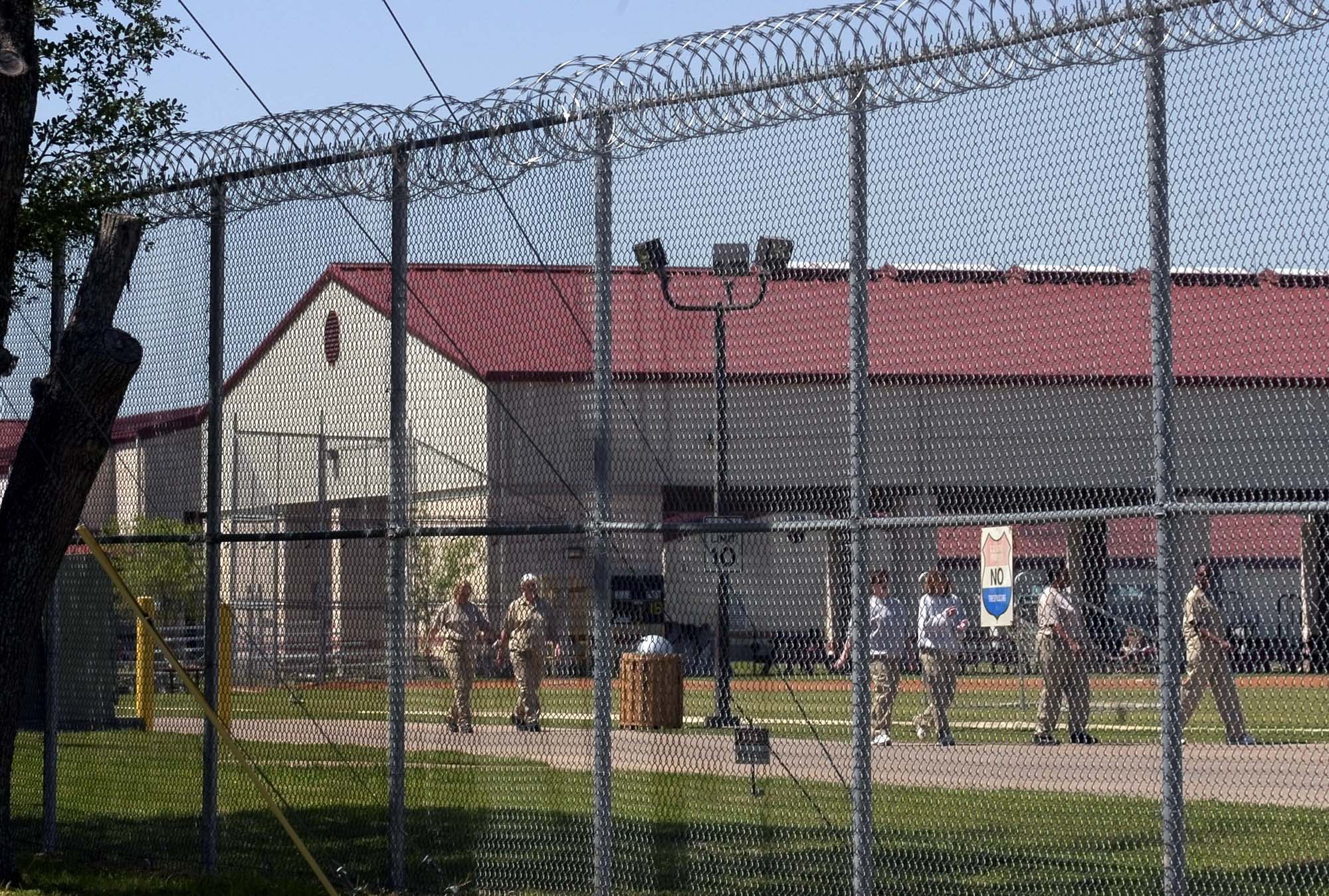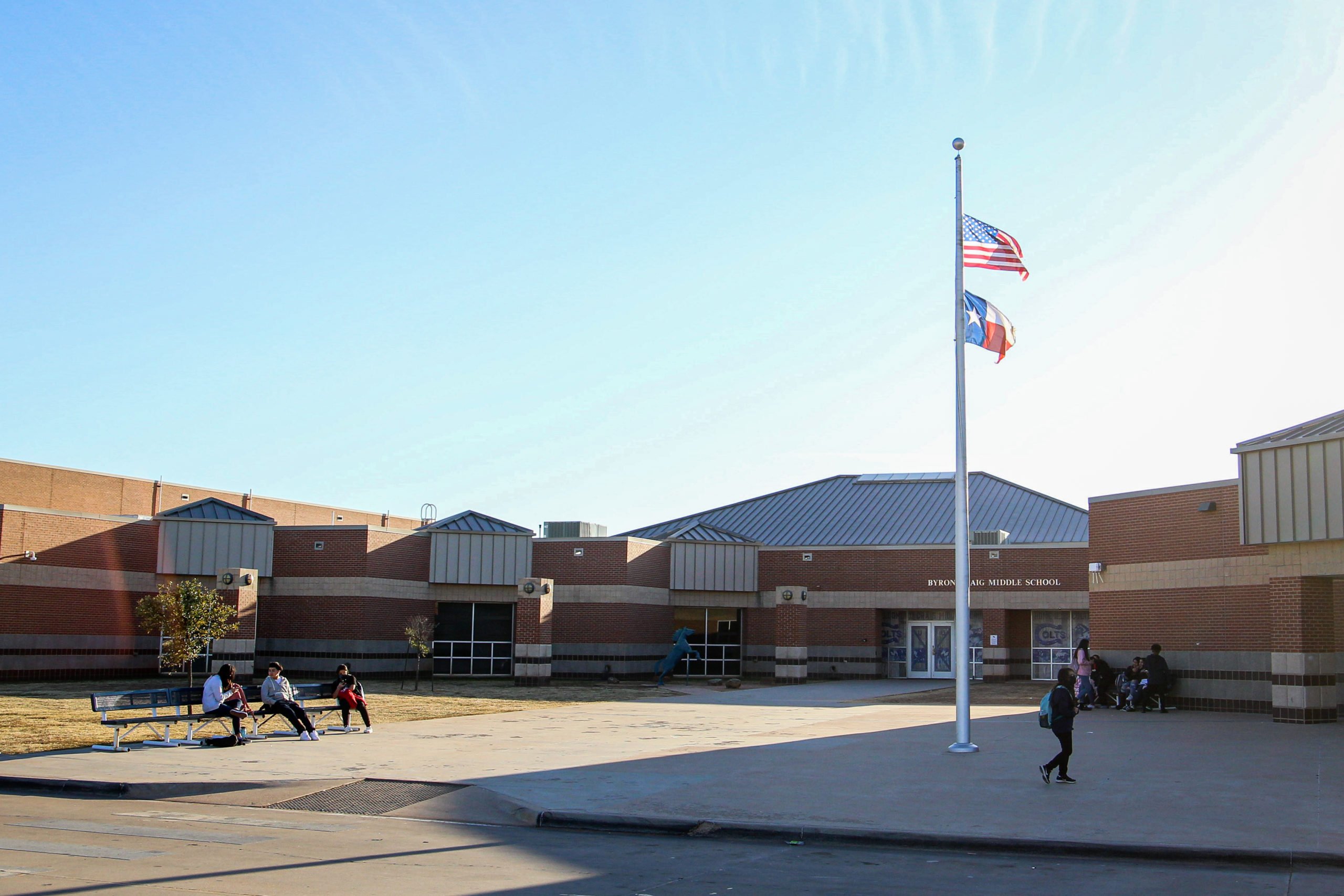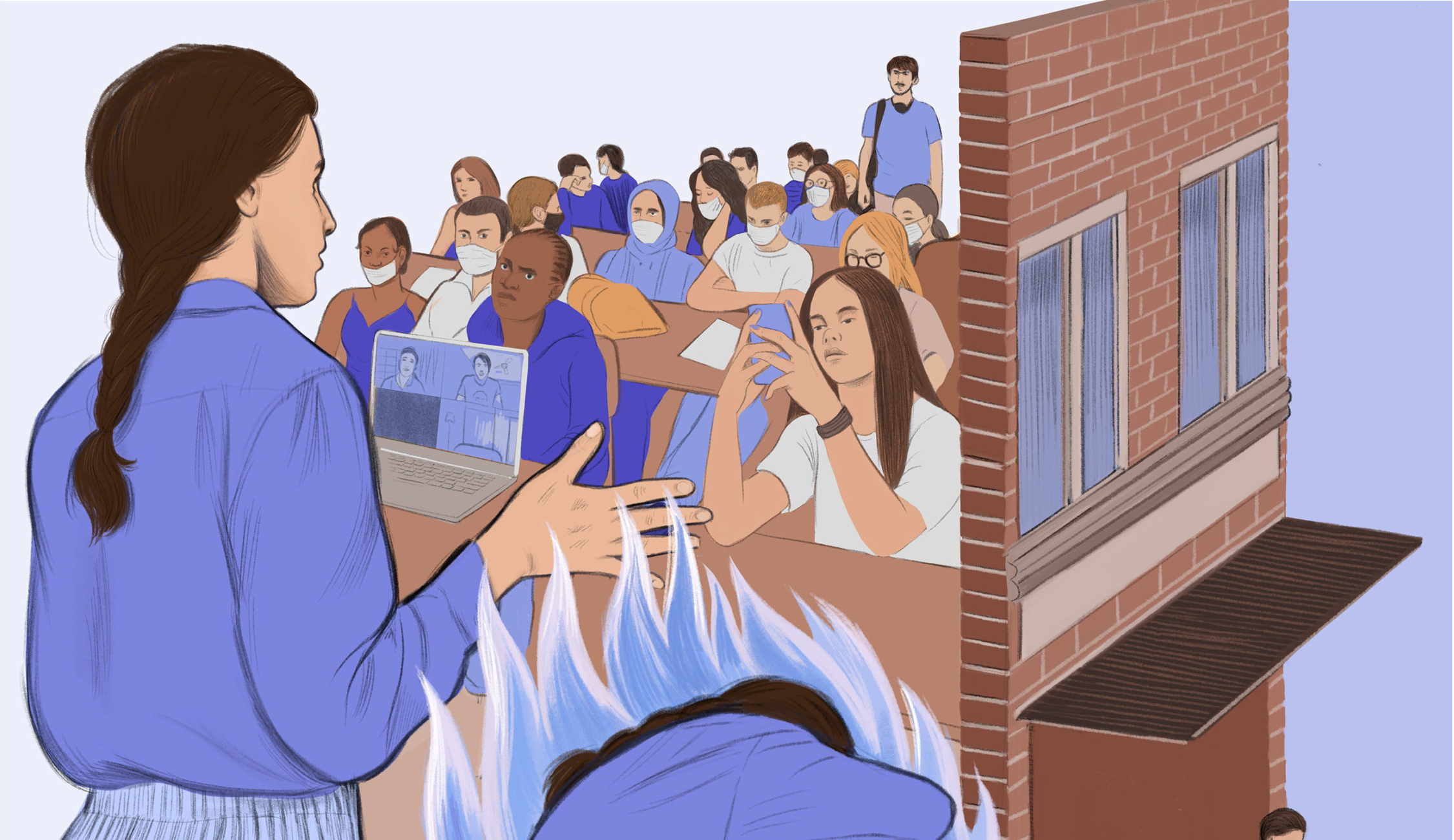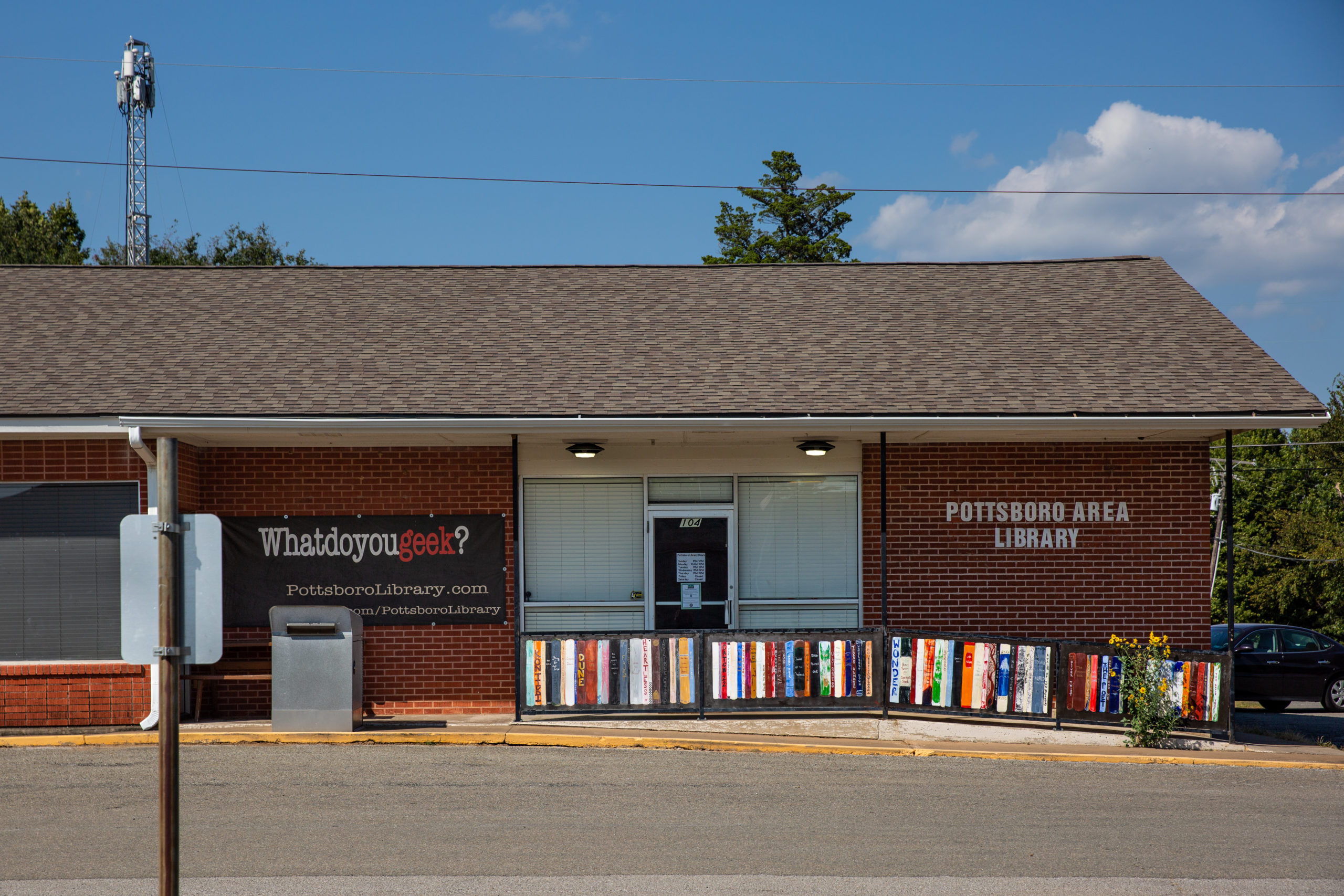
I Left My Friends in Prison in a Pandemic. Here’s What It’s Like For Them.
I receive phone calls from distraught friends inside complaining of unbearable heat, uncontrollable outbreaks, and paltry diets.
Above: A minimum security women's prison in Bryan.
This story first appeared in the Guardian on October 9.
When I first met my friend Melissa in prison, she impressed me with her ability to endure crisis with a mere shrug and dispassionate roll of the eyes. She doesn’t rattle easily, so the trembling in her voice during recent phone calls alarmed me.
“I’m scared,” she said about the mounting COVID-19 crisis in Texas prisons. This was the first time I heard Melissa say she feared anything.
Melissa is one of several incarcerated friends I stay in touch with. I met her in my 30s while serving a second prison term for a second-degree felony. I went inside for the first time at 15, and in my journey through 10 facilities over 20 years, I made many friends like her. When I was released in 2019, I promised to do whatever I could to improve the quality of their lives.
I never imagined how challenging that promise would be living on the outside while my friends remain locked up during one of the worst health crises the U.S. prison population has ever seen.
Their stories of daily life amid the pandemic give me such debilitating anxiety that I have trouble sleeping. I regularly receive phone calls and letters from friends distraught and afraid, complaining of unbearable heat, uncontrollable COVID outbreaks, threats of lockdowns, and paltry diets.
When Melissa first told me about the woman in the cell next to her suffering with COVID-19, I was transported back to 2010, when I watched the swine flu spread in my dorm, knowing that it was only a matter of time before it reached us all. “I hope we are released before something worse breaks out,” I told a friend who lived in the cubicle next to me. “Could you imagine?” she said. “They would just let us die.”
Her words now seem prophetic. COVID-19 has spiraled out of control in the Texas prison system despite early warnings from experts. People like Melissa keep me updated from the inside, although it’s not as if the numbers don’t speak for themselves.
The Texas state prison system is now outpacing the entire federal prison system with COVID-19 cases.
“I hope we are released before something worse breaks out,” I told a friend who lived in the cubicle next to me. “Could you imagine?” she said. “They would just let us die.”
As of October 8, there have been 23,085 positive cases of COVID-19 in the Texas prison system alone—15 percent of its total population. A total of 201 people have died—although the Texas Department of Criminal Justice (TDCJ) is yet to confirm that COVID-19 was the cause of all of these deaths.
Back in May, the TDCJ tested a small portion of its prison population and 70 percent tested positive for COVID-19. Mass testing followed, offering tracing and more effective quarantining. But reports have been bleak: In June, the ACLU and Prison Policy Initiative gave Texas an overall F concerning its initial COVID-19 response, due to limited testing and its reticence to release inmates who are medically vulnerable or near sentence completion.
Prison, even without a pandemic, is a breeding ground for infectious diseases. No matter what type of housing is utilized, human beings are trapped together in small, poorly ventilated spaces. In cellblocks, an inmate may spend 22 hours a day locked in a 60-70 square-foot cell. If they share the space, they also share their toilet with another person.
Prison dorms aren’t much better, with often up to 100 people living in cramped cubicles, an arm’s length away from each other. Communal areas like the restrooms, day rooms and chow halls are always crowded, and even the best sanitation efforts are difficult to maintain.
People are always in transit in prison—from one living area to another; one prison to another; sometimes even one state to another. Add the fact that the inmate population is older and with more underlying health conditions than previous years—and you have a recipe for disaster.
*
As extreme summer temperatures rose amid the mounting pandemic, Melissa’s fear turned to desperation and panic. “I threw up yesterday because it was so hot in our cellblock,” she told me one day in July.
I had just gotten into my car when she called. I sat with the windows rolled down, allowing the trapped heat to dissipate as she talked. The console read 102 degrees Fahrenheit.
During a “normal” summer, inmates are allowed to at least access the recreation yards and chapel, but the arrival of COVID-19 meant lockdowns—and even more restricted movement than usual. Respite areas were now highly controlled by the guards, and often at capacity.
And so the small communal areas where air conditioning could be accessed became a nightmare to social distance in.
“Where[ever] there’s AC we are crammed in shoulder to shoulder,” Melissa told me one afternoon—the strain in her voice more apparent than usual. “I don’t want to go in there, but I get dizzy and sick from the heat, what am I supposed to do?” she asked.
When I asked TCDJ about Melissa and the many other inmates across the state suffering from this double threat of COVID-19 and heat, it acknowledged that social distancing isn’t possible in all areas of its facilities.
“Where[ever] there’s AC we are crammed in shoulder to shoulder. I don’t want to go in there, but I get dizzy and sick from the heat, what am I supposed to do?”
Asked what, if any, plans are being made to address this TCDJ chose not to comment. I was assured, however, that masks are required for both employees and offenders at all facilities.
One thing that should help is the increased testing among inmates. But even that gain has been met with confusion and panic: Friends have called me to say swabs aren’t left in their mouths long enough; that positive tests are double-checked—leaving them suspicious about false negatives; and that prison staff seem to want to get away from them as quickly as possible when administering the procedure.
TCDJ of course denies this, and says it provides written and verbal materials to educate people on the procedures—as well as guidance on how testing should be administered.
But none of that makes my friends feel any better.
*
When someone tests positive for COVID-19 in a Texas prison, they are placed in medical isolation, and their units are placed on lockdown.
Prisoners are already on constant lockdown, so when a lockdown happens, it is even worse—like being in a prison inside a prison.
I shudder at the mention of lockdown. I remember them well, having experienced a few when I was still inside. Our treasured freedom to move around on the unit, to the chow hall, recreation yard, or the day room to watch TV and use the phones was suspended.
But for weeks, sometimes months at the beginning of the pandemic due to recurring cases, inmates were confined to their cells. In dorms, sometimes hundreds of people would have to ask a correctional officer just to go to the restroom or get a glass of water.
A lockdown can also mean no hot meals for weeks on end—with meals brought to prisoners in brown sacks, called “johnnies.” In a typical johnnie you might get a dry bowl of pre-made cereal for breakfast; a peanut butter and jelly sandwich for lunch on stale bread; for dinner you might get a boiled egg, two cold corn dogs or a baloney sandwich, maybe a cookie.
For weeks, sometimes months at the beginning of the pandemic due to recurring cases, inmates were confined to their cells.
“We were so hungry during those first quarantine lockdowns,” a friend wrote to me, about two months in. “We were fed like dogs. Someone finally took pity on us and reported it to the Marshall Project. Food got a little better after that,” she wrote—referencing recent changes that mean several dozen units now have access ability to serve hot meals during quarantine.
TDCJ denies that the article was the source of food improvements but accepted that hot meals were rarely available during its first lockdowns, saying they were unprepared for such lengthy quarantines at the beginning of the pandemic. But it is worth noting that this is not the first time Texas has encountered lengthy quarantines: in 2017, one Texas prison was locked down for 100 days due to staff shortages.
The conditions became so unbearable that in some dorms, I heard stories of women began putting ice on their faces; sitting in front of fans and putting wet towels on their heads when sick, because they didn’t want to trigger a COVID test and risk the possibility of everyone being put on lockdown again.
*
James White, a Republican state representative who chairs the house committee on corrections, has referred to prisons as hotboxes and has even suggested lowering the prison population to deal with the combined threats of COVID-19 and excessive heat.
“We can do more with effective drug treatment in the community, and divert folks away from the criminal justice system. This will allow us to lower the population, and close some old prisons. Selling these properties will create revenue that we can then invest into air conditioning the units that need it,” he told the Guardian in an interview.
This recommendation has been repeatedly made by advocates, but repeatedly dismissed or ignored by Governor Greg Abbott.
“It matters when a person makes parole, especially right now.”
For inmates who are due for release, more than 10,000 have been delayed due to processing issues. In May, 15,000 inmates were pending release upon completion of mandated in-prison classes—but classes grounded to a near halt in the spring when TDCJ restricted unit movement and transfers, meaning inmates simply couldn’t attend the classes.
“They should not have been delayed by paperwork. Programming could have been completed online at home,” said John Whitmire, chairman of the state Senate’s criminal justice committee.
Although programming has slowly started to move again, he is disappointed about the missed opportunity to get thousands of people out of harm’s way. “It matters when a person makes parole, especially right now.” But his attempts to have this discussion with Abbott have failed, and the governor’s office did not respond when asked for comments for this piece.
*
In August, a friend in a Houston prison wrote me with bad news.
Sandra explained how she had fallen ill with COVID on her ward, and feared that she might die. She had the shakes, a high fever for four days, and she was delusional. “I even had a dream about my grandma Becky … and she’s been in heaven since 2002!” she said astonished, as if the visit with her had been real.
Then, she told me about the situation on the ward. “We started dropping like flies,” she began. A mutual friend, Twilla had gotten sick. Another friend, Kitty, who used to run the scoreboard for our volleyball games, was still in the hospital. “And you remember Granny Anne Smith, the nice old lady from C dorm? Well, she’s not doing good. They said she’s on a ventilator and probably won’t make it.” I did remember Granny Anne. Her nickname was as much a sign of her doting nature and love of reading as it was her age. Despite her life sentence, she was always warm and unassuming.
She finished with uncharacteristically strong language, “This is just a clusterfuck,” she said. Her letter was hard to read, but I was glad she told me about Anne. I was at least somewhat prepared when TDCJ posted her death on August 24.
“Shouldn’t a healthy society want us well, whole and restored?” my friend Annette recently wrote to ask me. I don’t know what to tell her.
Read more from the Observer:
-
F is for Fake: How a dozen possibly fraudulent and forged Indigenous artworks left Texas and ended up on museum walls in Wyoming.
-
The Long Tail of Voter Suppression: As the growing number of Black and Latinx voters threaten the GOP’s stranglehold on power, attempts to limit safe voting options during the pandemic reveal a deeper sickness in Texas politics.
-
After the Deaths of Two Soldiers at Fort Hood, the Navajo Nation Wants Answers: Navajo families say their loved ones faced hazing and harassment at the Army base outside Killeen.


